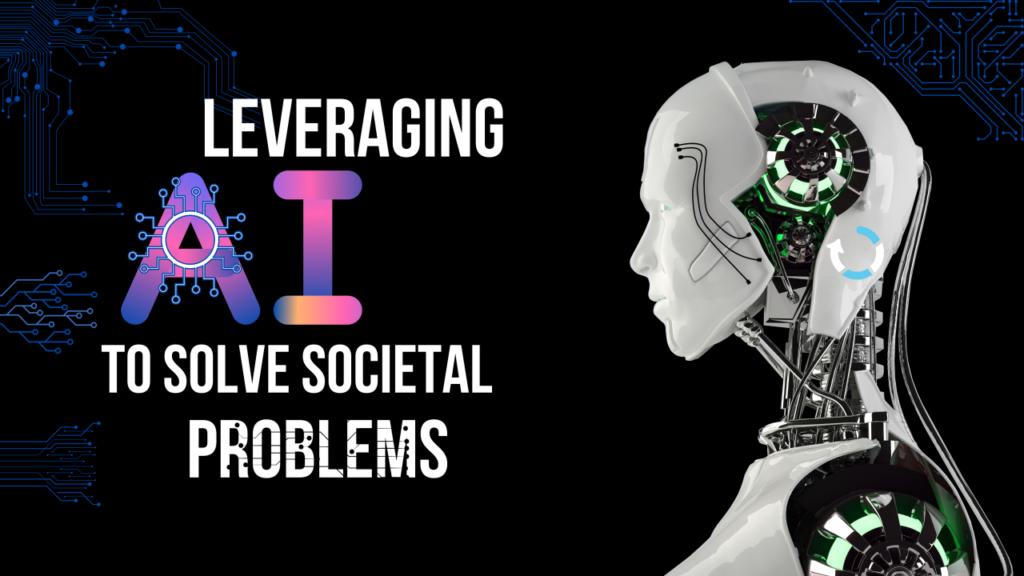Introduction
Nowadays, technologies like AI pave the way for an era of efficiency and automation. However, many people do not fully understand what AI is or even don’t have access to it at all. Therefore, AI illiteracy can exist on a very large scale and significant repercussions on society are highly likely. Such a problem raises the question of whether AI technologies should be democratized so that all consumers can gain equal access to them and also be properly educated so that misinformation is dampened. Although AI has paved the way for an era of efficiency and automation, including improving decision-making processes, enhancing operations, and improving customer experiences, it also presents certain challenges to society, such as ethical concerns, data privacy issues, and a lack of understanding by many. Therefore, further democratization of AI is necessary so that society can fully enjoy its benefits.
Why is There a Need For AI Education?
The rapid dissemination of AI has allowed people to be equipped with powerful tools, but this has created a gap in knowledge on how to use it responsibly and ethically. Nowadays, AI is pretty much in almost every electrical device ranging from phones to apps. At the forefront of this is ChatGPT, a large language model, where it allows the public to tap into AI easily and leverage its capabilities and make our lives easier. However, it’s this very convenience of not needing technical knowledge that has created potential issues such as over-reliance on the output of AI and also its misuse. The biggest challenge this presents lies in ethical concerns. Most users don’t realize that the things they are inputting into the AI such as their personal information are being stored and used to train AI models further. Such a breach of data blurs the line between what is considered a breach of privacy and what isn’t. The lack of knowledge from consumers, calls for the need for AI education.
Societal Problems AI Presents
AI poses several societal challenges that aren’t only short-term but can be extremely long-lasting. AI’s full capabilities and what tasks it can execute effectively or even if such an AI tool exists aren’t fully understood due in part to its fast-paced nature. This lack of knowledge can lead to people not utilizing AI in appropriate situations which can lead to lower adoption of AI tools. Additionally, one of the most main problems is whether people’s data are being confiscated by AI and whether AI can take over the world just like in the movies like Terminator. Such a problem also isn’t easily solved as it would be very difficult to convince people that AI wouldn’t be as dangerous as the public previously perceived it. AI’s ability to automate tasks and potentially replace workers could be an imminent threat. Such a threat to unemployment poses ethical concerns to recruiters on whether it is appropriate to replace their workers with AI technology.
Governmental Structures to Support AI
Governments have set up different structures to monitor AI. The main approaches taken by governments currently include:
Heavy investment in research and development of AI, the emergence of a collaboration between the public and private sectors, and certain reassurances whereby AI will have to uphold ethics set by governments like the US.
Governments have started to reinforce frameworks that help ensure that there is no bias or discrimination through the use of AI. For example, the EU’s General Data Protection Regulation (GDPR) aims to protect citizens’ data privacy from AI-powered apps using this to train their software.
What is the Democratization of AI
Democratizing AI would involve wide access to everyone, regardless of their backgrounds whether that’s income, demographics, or level of education. This will mean that the barriers that restrict AI’s adoption must be removed. The barriers to adoption include unequal access to technology where AI tools and software require suitable devices and infrastructure like access to the internet and computers. This usually is apparent in more rural areas of countries as the standard of living and GDP per head is typically lower; this therefore means that the public may have less access to phones or the internet. To establish AI democratization, governments need to take several key steps.
First off, sufficient investments in digital infrastructure are needed, especially in rural areas so that individuals and businesses can have greater access to the internet, computers, and also AI tools. Furthermore, governments should heavily invest in educational programs or subsidize firms that provide AI education so that the wider public can gain more knowledge which will reduce AI illiteracy. Finally, an ethical code of conduct should be established nationwide to prevent people from misusing AI and creating potential ethical issues.
Conclusion
AI illiteracy to a great extent creates societal challenges such as ethical issues and overreliance on such technology which means that democratization will be highly advantageous to push society in the right direction. By investing in strategic areas, governments can take a step towards democratization which can help dampen such issues. Ultimately, democratization is likely to be for the better of society as we have to continue to traverse in this age of disruption.
Bibliography
1. Journal of Democracy – International Day of Democracy 2024
https://www.journalofdemocracy.org/news-and-updates/international-day-of-democracy-2024/ This article explores various dangers of AI in many contexts which will allow me to assess the negative implications it presents to society and dissect each problem in granular detail.
2. MIT Open Learning – AI Literacy Explained, by Riley Webster
https://openlearning.mit.edu/news/ai-literacy-explained This article presents the way in which AI is perceived by the general public and how there are apparent misconceptions about where it is used and its capabilities. This allows me to better understand what AI literacy really means
3. Chatham House – Artificial Intelligence and the Challenge of Global Governance: Open-Source and Democratization, by Luke Millard
https://www.chathamhouse.org/2024/06/artificial-intelligence-and-challenge-global-governance/05-open-source-and-democratization I used this article on AI governance to allow me to assess the possible challenges and processes it may take to democratize AI. This article talks about the various implications of AI in governance.
4. NAIRR Task Force Final Report (2023) – National AI Research Resource Task Force
https://www.ai.gov/wp-content/uploads/2023/01/NAIRR-TF-Final-Report-2023.pdf This paper on the AI innovation ecosystem gives me an example of the progression of AI democratization in the US.
5. Journal of Democracy – How AI Threatens Democracy, by Nathaniel Persily and Joshua A. Tucker
https://www.journalofdemocracy.org/articles/how-ai-threatens-democracy/ This article delves into the factors that threaten AI democracy. This will help me to better understand the issues surrounding AI and democracy.
6. Springer – Ethical Issues in AI: An Overview of Societal Challenges, by Sarah Spiekermann and Andreas Roessler
https://link.springer.com/article/10.1007/s43681-023-00313-5 As I’m talking about society challenges in particular, this article will help explore the ethical issues in AI as a niche of the challenges within society.
7. UNESCO – AI Literacy and the New Digital Divide: A Global Call to Action
https://www.unesco.org/en/articles/ai-literacy-and-new-digital-divide-global-call-action
This article gives the latest trends in AI literacy and the core reason why democratization is so critical. Through this, I can dissect the role that global leaders can take to see if the democratization of AI is feasible and necessary.

